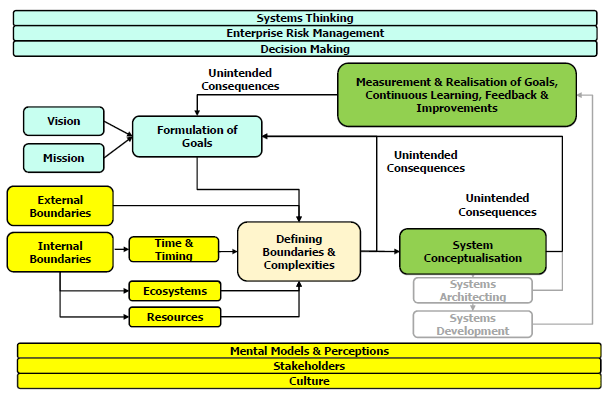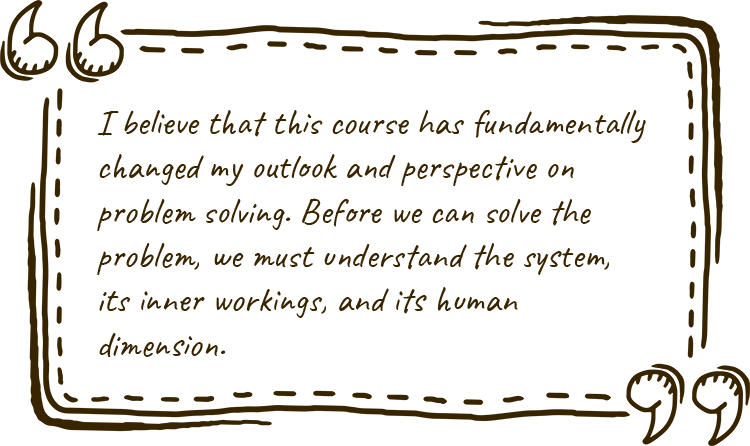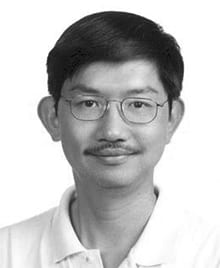Aaron CHIA Eng Seng
Department of Industrial Systems Engineering and Management, College of Design and Engineering (CDE)
Aaron takes us through his experience of teaching an interdisciplinary course on large-scale systems engineering, including an explanation of the framework used and the challenges encountered.

Chia, A. E. S. (2022, Feb 22). Reflections on teaching an interdisciplinary module. Teaching Connections. https://blog.nus.edu.sg/teachingconnections/2022/02/22/reflections-on-teaching-an-interdisciplinary-module/
Introduction
In this reflection, I provide an outline of how I have been teaching an interdisciplinary course, IE5404/DTS5701 “Large Scale Systems Engineering (LSSE)”, in the College of Design and Engineering (CDE). I will first explain the LSSE framework and its contents, and conclude with the challenges I encountered.
Large Scale Systems Engineering (LSSE)
Large-scale systems engineering (LSSE), as described by Chia (2007), deals with the conceptualising, designing, building, and managing of “system of systems” (SoS) from a systems engineering perspective. SoS inherently have complexities that could involve politics, economics, society, law, technology, and the environment. Systems thinking is the overarching concept for the LSSE framework (Figure 1). It is about considering the “big picture” and recognising the dynamic and interdependent nature of its elements and how they change over time. Other aspects of this framework include decision making, risk management, organisations and stakeholders’ analysis, formulation of vision, mission and goals, exploration of boundaries and unintended consequences. Iterations using the framework is also necessary to ensure that the system’s design is coherent and resilient.

Curriculum Design
The curriculum is designed in part based on my experiences in having engineering, business and psychology degrees, and working extensively in systems:
Engineering schools teach students how to design and conduct experiments, identify and solve problems, understand professional and ethical responsibility, and more (Osipova & Subkina, 2019). In addition, systems engineering equips students with the know-how to design, integrate, and manage complex systems over their life cycles. In LSSE, we identify and solve the right problems relating to SoS before designing (conceptualising) it.
Business schools teach about business operations, including the importance of customers, finance, operations, strategy, business policy and communications, and more (Tanaka et al., 2019). It is important in LSSE to consider the SoS stakeholders. Strategies and policies are important aspects of LSSE. Economics is an important consideration for most man-made systems.
Social science schools provide students with an understanding of the real world around them such as culture, behaviours, and more (Sibley, 1949). They provide in depth knowledge of the mental models, perceptions and culture of the stakeholders that must be considered in socio-technical systems.
Most importantly, systems thinking integrates all these disciplines. As shown in Figure 1, all the elements in the system are interconnected and affect one another. Integrating goals, economics, technologies, stakeholders’ interest, and environment concerns over time can be very challenging. Trade-offs are required and making decisions on one part of the system could bring about undesired consequences on other parts of the system and also other systems.
The above topics taught in IE5404/DTS5701 promote interdisciplinary learning for engineering students.
Challenges
The most difficult parts of teaching IE5404/DTS5701 were systems thinking and integration, and ensuring that the concept developed is coherent. Students must be constantly reminded that they needed to revisit each part of the concept to ensure that it fitted well with the other parts, and any missing areas and incongruities had to be resolved.
Students discovered that selecting the best option was not easy due to the unique characteristics of each option, as well as the risks and unintended consequences involved. As in real life, there is often no perfect option in the decisions we make. This challenge could be in part due to the interdisciplinary nature of IE5404/DTS5701. For example, coming up with an excellent technical solution alone is not good enough. One also has to consider the interests of the different stakeholders in the system. In addition, the best technical solution may not be cost-effective or robust enough to withstand changes over time.
Engineering modules often rely on mathematics and experiments. As such, engineering students are not used to dealing with ambiguities and multiple possible solutions. They are also not familiar with strategies and making policies. We observed in IE5404/DTS5701 that some students were not comfortable in questioning their mental models. Others were not familiar with the case method and found writing essays challenging.
The above challenges are currently being addressed by sharing more case studies/personal examples and feedback via assignments. Coaching sessions on students’ group projects were found to be particularly helpful.
However, this is only the start of their respective journeys. As they start applying these concepts in their personal and work lives, hopefully they can internalise systems thinking and change their outlook and perspectives, as illustrated by one student’s comment:

 |
CHIA Eng Seng, Aaron is an Associate Professor in the Department of Industrial Systems Engineering and Management, College of Design and Engineering (CDE). His main teaching and research areas are in systems thinking, systems dynamics and systems engineering with respect to large systems. He is currently delving into enterprise architecture and machine learning and dynamical systems. Aaron is contactable at aaron_chia@nus.edu.sg |
References
Chia, E. S. (2007, June 24-28). Systems engineering and large-scale projects [Conference presentation]. INCOSE 2007 International Symposium, San Diego, CA, United States.
Osipova, S., & Subkina, O (2019, June 25-27). Teaching engineering students: From principles to practices [Conference presentation]. 15th International CDIO Conference at Aarhus University, Denmark. Retrieved from http://www.cdio.org/knowledge-library/documents/teaching-engineering-students-principles-practices.
Sibley, E. (1949). The education of social science teachers. The Journal of General Education, 3(2), 113–120. http://www.jstor.org/stable/27795255
Tanaka, K., Cooper, D., Allred, N., Arguello, N., Bourke, B., Branch, N., Cadena, C., & Zawistoski, A. (2019, December 12). Teaching Business: Looking at the Support Needs of Instructors. https://doi.org/10.18665/sr.312297
National Council of Education Research and Training (2006). Teaching of Social Sciences. Publication Department, National Council of Education Research and Training.

